#henri de lorraine
Text
Don't mind me, just watching this show for the nth time and crying cause we never got s2


#Forever#Forever tv#Forever abc#Henry Morgan#ioan gruffudd#alana de la garza#Jo martinez#judd hirsch#joel david moore#lorraine toussaint#tv#crime tv
246 notes
·
View notes
Text















Forever S01E05 The Pugilist Break.
#forever abc#joanna reece#henry morgan#mike hanson#jo martinez#lucas wahl#lorraine toussaint#ioan gruffudd#donnie keshawarz#alana de la garza#joel david moore#EXCELLENT timing there lucas#i'm sure the lieu sometimes questions exactly why she continues to employ this team#but results are results so...#ghostly'sgifs
69 notes
·
View notes
Text



Goodfellas (1990)
#1990#gif#film#movie#mafia#Goodfellas#Martin Scorsese#Joe Pesci#Tommy DeVito#Robert De Niro#James Conway#Ray Liotta#Henry Hill#Paul Sorvino#Paul Cicero#Lorraine Bracco#Karen Hill
110 notes
·
View notes
Text
Sorted caps from Forever.
Joann Reece - Lorraine Toussaint ~9,000
Lucas Wahl - Joel David Moore ~15,000
Jo Martinez - Alana De La Garza ~40,000
Henry Morgan - Ioan Gruffudd ~60,000+
Abraham Morgan - Judd Hirsch ~20,000
Abigail - Mackenzie Mauzy ~3,000
Maureen Delacroix - Jane Seymour ~1,000
This content is free for anyone to use or edit however you like; if you care to throw a dollar or two my way for time, effort, storage fees etc you are more than welcome to do so via my PAYPAL. Please like or reblog this post if you have found it useful or are downloading the content within. If you have any questions or you have any problems with the links or find any inconsistencies in the content, etc. please feel free to drop me a politely worded message via my ASKBOX (second icon from the top on my theme!)
#forever#forever screencaps#forever caps#ioan gruffudd#alana de la garza#judd hirsch#mackenzie mauzy#jane seymour#lorraine toussaint#joel david moore#joanne reece#lucas wahl#o martinez#henry morgan#abraham morgan#abigail morgan#maureen delacroix#MY FOREVER CAPS.
10 notes
·
View notes
Text
LES DENTS DE LA MER (1975)






























Pendant l'été du 1er juillet 1974, sur l'île d'Amity, un groupe d'étudiants fait la fête sur la plage. Une jeune femme s'éloigne du groupe pour un bain de minuit alors que son flirt s'endort sur la plage, ivre. Après quelques brasses, la jeune femme est attaquée par une force mystérieuse, elle tente de résister mais est happée et disparaît dans l'eau en poussant des cris de terreur. Quelques secondes après, la mer retrouve son calme nocturne. Personne ne sait ce qui vient de se dérouler.
Le lendemain, à la suite de la déclaration de la disparition de la jeune femme, Martin Brody, nouveau chef de la police locale originaire de New York, découvre les restes de la victime. Il attribue aussitôt cette mort à une attaque de requin, mais sous la pression du conseil municipal et aussi en raison de son inexpérience sur cette île, il suit les recommandations du médecin légiste de l'île et conclut à une mort accidentelle (noyade et choc avec un bateau).
Quelques jours après, un enfant est happé à son tour par le requin, et cette fois les témoins sont nombreux à assister à la scène. Le doute n'est plus permis : un requin rôde le long des plages d'Amity.
Le conseil municipal est confronté à un choix douloureux. Il peut adopter des mesures de protection le temps de se débarrasser du requin, c'est-à-dire interdire la baignade. Mais ceci mettrait en péril l'activité touristique de l'île à quelques jours du 4 juillet, la fête nationale américaine.
De plus, la mère de l'enfant a passé une annonce dans les journaux locaux et promet 3 000 dollars à qui tuera le requin. Le conseil s'inquiète de la publicité négative sur la ville et également de l'arrivée en masse de pêcheurs plus ou moins qualifiés pour obtenir la récompense. Parallèlement, Quint, un pêcheur local, propose ses services au conseil municipal pour tuer le requin mais il exige 10 000 dollars.
Le chef Brody essaie de son côté d'en savoir plus sur les requins et fait appel à l'institut océanographique pour avoir les conseils d'un expert. Matt Hooper, l'expert, arrive sur l'île le 2 juillet. Dès son arrivée, il demande à examiner le corps de la première victime et démontre de manière irréfutable qu'il s'agit d'une attaque de requin. Peu après, le même jour, des pêcheurs tuent un requin-tigre. Le maire exulte mais Brody, sur les conseils de Hooper, émet des doutes sur la responsabilité de ce requin dans les attaques : la mâchoire qui a attaqué la première victime serait beaucoup plus grosse que celle du requin pêché. Le maire refuse de suivre les recommandations du chef de la police et pense avant tout à l'afflux de touristes pour le 4 juillet. Les plages seront surveillées, mais interdiction de les fermer, même après qu'une autopsie du requin prouve qu'il avait le ventre vide.
Le 4 juillet, alors que la police et les gardes-côte surveillent la mer, le requin parvient à déjouer la surveillance et attaque à nouveau. Le maire n'a plus le choix : il accepte la proposition de Brody et engage Quint pour tuer le requin. Bien qu'il soit aquaphobe, Brody est de la partie. Hooper se joint également à la chasse pour apporter son expertise sur les requins. Quint et Hooper ne s'apprécient guère pour commencer mais brisent la glace avec une beuverie en mer. Après plusieurs essais, les trois hommes tentent un ultime essai pour tuer le requin. Hooper descend dans une cage anti requin avec un poison dans son harpon pour le lui faire avaler. Mais le requin attaque et détruit la cage manquant de peu de dévorer Hooper qui se réfugie au fond. Le requin attaque à nouveau et tue Quint. Brody réussit à faire avaler une bouteille d’oxygène au requin et le tue en le faisant exploser en tirant sur la bouteille avec un fusil. Hooper remonte à la surface et retrouve Brody. Ils réussissent à atteindre le rivage durant le générique de fin.
#Les Dents de la mer#Jaws#Steven Spielberg#John Williams#Peter Benchley#Roy Scheider#Robert Shaw#Richard Dreyfuss#Lorraine Gary#Murray Hamilton#Carl Gottlieb#Jeffrey C. Kramer#Susan Backlinie#Chris Rebello#Lee Fierro#Dr. Robert Nevin#Chris Anastasio#Henry Carreiro#Fritzi Jane Courtney#Dorothy Fielding#Mike Haydn#Carla Hogendyk#Belle McDonald#Ayn Ruymen#John Searle#Dick Young
2 notes
·
View notes
Text
someone’s dog-eared this library copy of saint-simon’s memoirs on the page where it says ‘... the Chevalier de Lorraine [...] ruled Monsieur in everything. He had been compellingly handsome; Monsieur’s taste was not for women; he made no attempt to disguise it; he had taken the Chevalier de Lorraine for his master and so he remained for the rest of his life.”
#sorry ive regressed to 2017 17th century france ulrike#ulrikecore#philippe i duke of orleans#philippe chevalier de lorraine#henri de saint-simon#history#shut up ulrike
8 notes
·
View notes
Text
"Purging the body politic of undue Guise influence"
The relationship between the duke and the king during the next three years was complex. Henry was far too clever to try to provoke or humiliate the Guise, but his desire to effect a fundamental transformation of the court and the kingdom would inevitably mean tackling vested interest groups. The king wanted to keep Guise at court so he could keep an eye on him, and to this end extended his generosity. Likewise, the traditional picture of Guise as a man driven by ambition, cynically manipulating the opposition to undermine the king does not hold. Only slowly, almost imperceptibly at first, would the duke find himself undermined and his pride damaged.

Henry III was fastidious and paid much attention to etiquette. He made significant changes to the structure of the court designed to break the Guise monopoly on high office. The Grand Master of the Household ‘the first and cheifest office and dignitie’, as the Englishman Richard Cooke described it, had been in the hands of the Guise since 1559, and Cooke saw the duke perform the role:
When the king maketh a great dynner with solempnitie & ceremonie, it is his charge to serve in person as stewarde and master of the house with a white staffe in his hande, & must go before the meate which is served at the King’s table . . . [he] hath by virtue of his office the greatest allowance and the greatest table in the Court, that is for fowre & twentie persons, and to his table doe come ordinarily many younge noble men & others makinge profession of armes. And this table is allwaies covered whilest the King dynethe.
A great privilege certainly. But Cooke was unaware that the control of the Grand Master over the court had been weakened in 1578 by the creation of a new official, the Grand Provost (grand prévot de l’hôtel), who was given responsibility for the policing of the court. It was entrusted to a mignon, François du Plessis, the father of Cardinal Richelieu. The same happened to the post of Grand Ecuyer. When this was in danger of falling into Guise hands, Henry diluted its authority over the royal stables by creating a new institution, the Petite Ecurie.
Purging the body politic of undue Guise influence was not just a question of bureaucratic organization; it was one of style. Those who did not share the king’s intellectual pursuits felt left out; his disdain for traditional aristocratic pastimes hit the Guise particularly hard. Charles d’Aumale was Master of the King’s Hunt, a post that, during the previous reign, had given his father control of 340 staff and a budget of 70,000 livres per annum, but Henry III rarely hunted and expenditure fell to 24,500 livres in 1584. Aumale was forced to sell land in order to make ends meet. Kings of France had traditionally lived their lives in public and been accessible to their subjects. Henry III followed the English model and took steps to restrict access thus ‘avoiding the confusion that continually takes place in his chambers, where everyone without distinction wishes to enter without the ushers being able to stop them’. He and the Guise were seen together much on public occasions, but real business was increasingly conducted in private. In 1581, the king, against the advice of his mother felt confident enough to establish a secret inner council. This was associated with the rise of two men from the pack of mignons, Jean-Louis de la Valette and Anne de Joyeuse, to positions of pre-eminence at court. They emerged as the principal ministers in the new cabinet. Henry set about turning these men, from the modest southern nobility, into great magnates, straining his relationship with the Guise to breaking point.
Guise had little to complain of publicly: he was regularly seen with the king; his pension and salaries were paid on time; he directly benefited from innovative and unpopular taxes. In the summer of 1581 he was awarded a gift of 200,000 livres, part of his cut from nine new fiscal edicts registered that summer, which enabled him to pay off many debts. But this was a sweetener to prepare him for his political exclusion. In September the viscounty of Joyeuse was raised to a duchy and negotiations opened with Mayenne to resign the office of Admiral of France. The king arranged Joyeuse’s marriage to the queen’s sister, Marguerite de Lorraine; and, once again, Guise could hardly complain, as Marguerite was his cousin. A deal was struck: Mayenne resigned the admiralty to Joyeuse for 360,000 livres, in return for which the marquisate of Elbeuf was created a duchy. Guise appeared for the marriage, where only the painting we have investigated records his displeasure at the extraordinary favour displayed to Joyeuse, who was given a gift of 1.2 million livres. The festivities, called ‘Magnificences’ lasted for two weeks, and stunned contemporaries with their sumptuousness. Even Pierre de l’Estoile, who was among the 50,000 spectators at one of the parades, was grudgingly impressed in his journal. And the king did not stop there. On New Year’s Day 1582, Joyeuse and Epernon were appointed as alternating First Gentlemen of the Privy Chamber: henceforth no one could leave or enter the king’s apartments without their consent. Resistance to the palace revolution coalesced around the figure of la Valette, who became Duke of Epernon in November 1581. His rise was even more remarkable than that of Joyeuse. During the 1580s he would accumulate something in the region of 3 million livres in salaries, pensions, and royal gifts, putting into perspective the crumbs with which Guise had to be content. While Joyeuse took care of the navy, Epernon was charged with reasserting royal control in the army; in July 1582 he became colonel-general of the infantry and was named commander of many important garrison towns, most notably Metz, from where he could keep an eye on the duchy of Lorraine.
Stuart Carroll - Martyrs and Murderers : the Guise Family and the Making of Europe
#xvi#stuart carroll#martyrs and murderers: the guise family and the making of europe#henri iii#henri i de guise#françois du plessis de richelieu#jean-louis de la valette#anne de joyeuse#charles i d'aumale#marguerite de lorraine
6 notes
·
View notes
Text
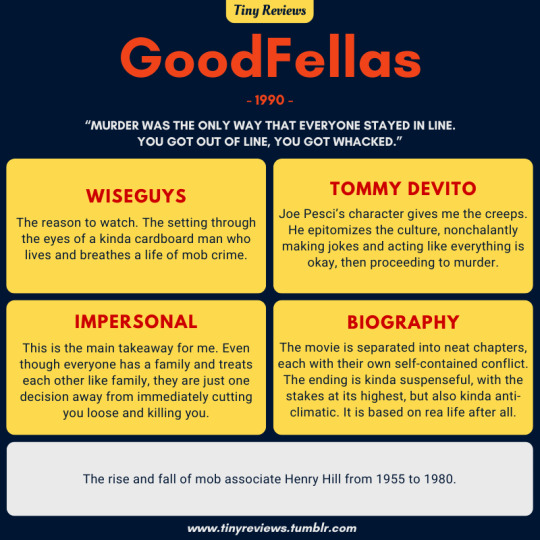
Martin Scorsese sure likes doing crime movies.
Goodfellas (stylized GoodFellas) is a 1990 American biographical crime film directed by Martin Scorsese, written by Nicholas Pileggi and Scorsese, and produced by Irwin Winkler. It is a film adaptation of the 1985 nonfiction book Wiseguy by Pileggi. Starring Robert De Niro, Ray Liotta, Joe Pesci, Lorraine Bracco and Paul Sorvino.
#goodfellas#good fellas#wiseguy#wise guy#martin scorsese#robert de niro#ray liotta#joe pesci#lorraine bracco#paul sorvino#biography#crime#drama#henry hill#movie review#1990
4 notes
·
View notes
Text
youtube
#history#royal history#lindsay holiday#philippe I duke of orleans#queer#queer history#philippe de lorraine#henriette anna of england#louis xiv#armand de gramont#elizabeth charlotte of the palatinate#anne lennard#armand charles de la porte de la meilleraye#charles II#aphra behn#her history#henry of prussia#blainville#count la roche laymon#christian ludwig von kaphengst#frederick II#isabella of bourbon-parma#joseph II#maria christina of teschen#ludwig viktor of austria#luisa isabel alvarez de toledo#leoncio gonzalez de gregorio#liliana maria dahlmann#ivar mountbatten#mavendra singh gohil
0 notes
Text
The Funeral of Claude of Lorraine, Duc de Guise – July 1, 1550
The Funeral of Claude of Lorraine, Duc de Guise – July 1, 1550
16th Century Italian Funeral procession in Padua 1583
“My son, my friend, if Fortune does me the wrong of taking him [her husband] from me, I will do with the honest people that I have here the best that I can, and you shall be advised of everything. For, my friend, after God, I can have no hope and consolation save in you and my other children. I cannot be without grief so great that in truth I…
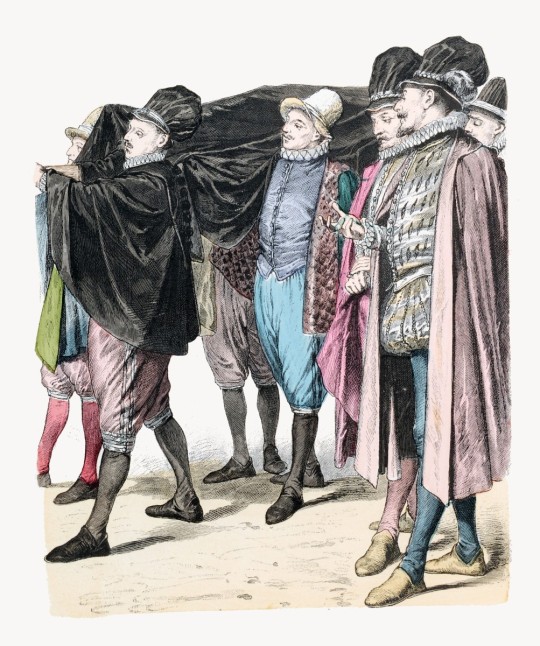
View On WordPress
#Antoinette de Bourbon#Cardinal Jean de Lorraine#Claude of Lorraine#Duc de Guise#Duchess of Guise#Duke of Guise#Francois de Lorraine#French history#Henri II#King of France#Renaissance history
0 notes
Text
Celebrate & Give: The PreWedding Charity Gala
Edinburgh, Scots
Ahead of their Wedding Day, HRH Prince Oliver, HIH Madame Hortense, their friends, family and other royal guests attend a charity gala at the Royal Mueseum of Art. The gala was hosted by the bride and groom's uncles: HIM Emperor David of Pierreland, HIH Prince Henri of Francesim, & HRH the Duke of Argyll. In lieu of gifts, the couple asked attendees to the wedding and joyus citizens to donate to Wounded Warrior Foundation, Royal Armed Forces Bereavement Fund, Let's Read Francesim, and The Mother & Infant Teaching Fund.
Arrival of the Families

HRH Prince Oliver of Scots & HIH Madame Hortense of Francesim

TM King Alexander & Queen Marie Christine of Scots

TIM Emperor Napoleon V & Empress Charlotte of Francesim @empiredesimparte

HIM Madame Mere

(L-R in the back) HRH Prince Magnus of Argyll, HRH The Duke & Duchess of Argyll, & HRH Prince Dominic of Argyll
(Front) HRH Prince Andrew of Argyll

Back (L-R): Princess Amelie of Francesim, HIH Princess Olympia of Francesim, HIH Prince Henri of Francesim, HIH Princess Marianne of Francesim, HIH Princess Sophie of Francesim.
Front: HIH Princess Armance of Francesim

TIM Queen Vivanna II & King Phillippe of the Ionian Union @funkyllama

(L-R): HIH Prince Henri of Pierreland, TIM Empress Katalina & Emperor David of Pierreland, and HIH Princess Maria Aisha of Pierreland

HIH Crown Prince Louis of Pierreland & HRH Princess Magdalena of Lunaria

Left: Their Highnesses the Grand Duke & Duchess of Bordeaux
Right: Mrs Isabella Villa & Mr. Sebastian Villa
Guests

HM Queen Diana of Simdonia & HRH Prince Gerhard de Geloes @bridgeportbritt

HM Queen Anastasia of Carrington & HRH the Duke of Clois @royalhouseofcarrington

TM King Arnaut & Queen Lorraine of Uspana @nexility-sims

HM King Harrison of Brighton @covingtons

HM Queen Elizabeth of Trenton & HRH the Duke of Glassworth @trentonsimblr

(L-R): Mr. Ahmad Chambers, Miss Lucy Chu, Lady Evie MacPherson, Lord Callen MacGregor & Lord Rhys MacPherson
35 notes
·
View notes
Text






Henri Chapron (30 dicembre 1886 - 14 maggio 1978) è stato un importante carrozziere automobilistico francese . La sua carrosserie , creata nel 1919, si trovava nel sobborgo parigino di Levallois-Perret.
Chapron ha spostato la sua attenzione sulla Citroën DS lanciata di recente . La prima coupé DS rimodellata di Chapron fu la Le Paris del 1958.
Inizialmente, Chapron acquistò questi veicoli e li personalizzò come creazioni uniche. Molte di queste divennero varianti decappottabili uniche. La sua DS decappottabile fece scalpore al Motor Show del 1958. I dirigenti della Citroën vennero a trovarlo a Levallois per offrirgli un contratto di produzione.
Per due anni, i team Chapron e Citroën hanno lavorato fianco a fianco per rafforzare gli standard di sicurezza della vettura e ridurre al minimo i costi di produzione. Sulla base di un progetto del designer DS Flaminio Bertoni, Chapron sviluppò una carrozzeria decappottabile a due porte che fu venduta attraverso la rete di concessionari Citroën. La serie decappottabile fu presentata al Motor Show di Parigi del 1960.
La collaborazione ufficiale con Citroën iniziò nel 1961. Una notizia sul Daily Variety del 20 luglio 1961 notava che Cary Grant aveva "telefonato alla casa automobilistica francese Citroën per ordinare una nuova auto da utilizzare nel film" Quel tocco di visone . [3] Secondo quanto riferito, la fabbrica ha spedito "il modello da esposizione" allo studio senza esitazione e l'auto è presente in primo piano nel film, ottenendo una pubblicità chiave per il modello.
Chapron ha costruito questa "Décapotable usine" (decappottabile di fabbrica) - 1.365 auto in tutto. Ciò ha consentito agli acquirenti di beneficiare di una garanzia di fabbrica sui convertibili Usine acquistati. Le decappottabili di fabbrica utilizzavano una piattaforma DS fornita da Citroën, che comprendeva tutta la meccanica, i parafanghi anteriori, il parabrezza e le ruote. Chapron ha utilizzato il telaio completo, ma ha rinforzato vari elementi nella zona del pavimento. Le porte della berlina standard sono state allungate di 18 cm; Chapron ha rifatto i parafanghi posteriori. Chapron ha continuato a realizzare i propri veicoli basati su DS, tra cui Croisette , Palm Beach , Le Dandy , Lorraine e Le Leman.
A differenza delle decappottabili di fabbrica, Chapron utilizzava solitamente per i suoi modelli un parabrezza più basso di sei centimetri. I finestrini laterali, compresi quelli posteriori, potevano essere abbassati manualmente o elettricamente, a differenza dell'auto di serie. Venditore esperto e intenditore, Henri Chapron desiderava le pelli più pregiate . Mentre Citroën acquistava le sue pelli da Costil a Pont Audemer, Chapron le ordinava da Connolly in Inghilterra. Nel 1968, Chapron realizzò uno speciale modello presidenziale DS esteso per il governo di Charles de Gaulle .
Nel 1972, Chapron consegnò due modelli presidenziali SM al governo di Georges Pompidou . Queste gigantesche decappottabili a quattro porte furono utilizzate per la prima volta nel 1972 in occasione della visita della Regina Elisabetta II in Francia e continuarono ad essere utilizzate fino all'inaugurazione di Jacques Chirac nel 1995.
La Presidentielle fu rimessa in servizio nel 2004, quando la Regina Elisabetta II revisionò truppe sugli Champs Elysees con Chirac il 5 aprile 2004, all'inizio della visita di stato di tre giorni della regina in Francia per celebrare i 100 anni di amicizia formale tra Francia e Gran Bretagna. L' Intesa Cordiale , firmata a Londra l'8 aprile 1904, risolse una serie di controversie coloniali e contribuì a stringere un'alleanza contro la risorgente Germania
La Citroën SM Mylord è stata progettata come una decappottabile completa a due porte, ovvero senza roll bar. È stata dotata di una carrozzeria a tre volumi con un piccolo cofano del bagagliaio, che nella parte posteriore riprendeva autenticamente il design del veicolo originale, in particolare la targa rialzata. Il prototipo della Mylord fu presentato al Motor Show di Parigi nel 1971 e le vendite iniziarono un anno dopo. La produzione fu complessa, a cominciare dal fatto che Chapron ricevette una carrozzeria standard da Chausson. La tecnologia e il pianale della SM Coupé rimasero sostanzialmente invariati; anche il passo è stato mantenuto. I montanti B e C furono rimossi, dopodiché Chapron installò ampi rinforzi nella zona della carrozzeria.
La carrozzeria modificata fu trasportata alla Citroën, dove furono installati il motore, il telaio e altri componenti tecnici. Alla fine, l'auto è stata riportata all'officina di Chapron per rifare gli interni e verniciarli. Nel complesso, furono prodotte solo poche Mylord decappottabili; le fonti variano tra sette e otto copie. Quello che è certo è che in Francia sono stati venduti quattro veicoli; altri due sono andati in Spagna, uno nel Regno Unito. Un anno dopo la Mylord Cabriolet, Chapron sviluppò una versione berlina della SM di serie, l' Opera. Chapron sviluppò una berlina che rimase fedele al design del modello originale e alla fine rappresentò una versione ampliata della SM Coupé. Partendo da una carrozzeria SM in bianco, Chapron ha esteso notevolmente il passo. Le porte anteriori sono state accorciate e sono state apportate alcune modifiche nella zona della linea di cintura. Le porte posteriori erano un progetto interno di Chapron. Riprendevano la linea della coupé e presentavano anche la caratteristica piega davanti al montante posteriore.
Alla fine, Chapron rimosse il grande portellone posteriore e lo sostituì con una costruzione a tre volumi . La parte posteriore, a sua volta, corrispondeva al design della coupé. Il veicolo era molto pesante e aveva perso parte della manovrabilità del coupé. La Citroën SM Opera venne presentata al pubblico al Salone di Parigi del 1972. Nei due anni successivi, Chapron produsse un totale di otto berline Opera. Almeno due di essi sono ancora conservati. Un veicolo in ottime condizioni si trova nei Paesi Bassi, un altro in Germania.
Henri Chapron muore a Parigi nel 1978 e l'azienda stessa sopravvive per qualche tempo sotto la direzione della vedova. Meno di cinque mesi dopo la morte di Chapron, l'azienda presentò una conversione con carrozzeria Landaulet costruita per un ricco cliente olandese, basata su una Peugeot 604 allungata .
C'erano speranze che questo potesse portare a una produzione bassa ma costante di conversioni simili, come era accaduto durante le versioni speciali allungate di Chapron basate sulla Citroën DS.
Ciò non accadde, ma l'azienda produsse alcune versioni speciali di lusso (compresi i landaulet) della Citroën CX con interni riccamente equipaggiati. Le officine Chapron prepararono diversi veicoli Landaulet basati sulla CX 2400 Prestige, inclusa un'auto nuziale, consegnata nel 1981 e utilizzata per la prima volta per il matrimonio di Henri de Passau, Principe di Borbone Parma e Grande Erede e Maria Teresa Grand Duchessa. Fu poi utilizzato per le nozze del re Harald V di Norvegia , del principe ereditario di Norvegia, dell'arciduca Cristiano d'Austria e della principessa Marie Astrid, e infine del principe Nicola del Liechtenstein e della principessa Margaretha di Lussemburgo per i loro rispettivi matrimoni
21 notes
·
View notes
Text
Topping off #InternationalChameleonDay with this collection of pâte de verre glass chameleons by Amalric Walter (French, 1870-1959) & Henri Bergé (French, 1870-1937), all c.1920:

1. paperweight H8.5cm

2. tray (vide-poche) H8.5 x L15 x P11.2 cm

3. tray (vide-poche) L25.5cm

4. pendant 60x60mm
"This French pate-de-verre (glass paste) pendant is a rare survivor of 'artistic' jewellery of the 1920s. It was made by Amalric Walter to designs of his friend Henri Berge at their glass studio in Nancy, Lorraine, which produced decorative glass objects for discerning clients between 1919 and 1935. Walter and Berge excelled at using the complex technique of pate-de-verre casting, which they perfected while working at the Daum glassworks before the first World War. They pressed layers of coloured glass granules into wax moulds before firing them the kiln. The technique offered endless colour combinations and Walter experimented with the chemicals used to colour the glass, even using uranium to achieve the bright yellow seen in this pendant. Their products varied in price and complexity and while they were often replicated in series, each piece was hand finished and unique with subtle design and surface variations. A distinctive characteristic was the use of naturalistic motifs which were becoming simpler as the modern Art Deco style began replacing Art Nouveau in the 1920s. Issued alongside chameleon paperweights and bowls, this pendant is an example of this stylistic transition. When sold new, it was probably suspended on long silk cords to complement fashionable Jazz-era dresses. Some of these pendants however, might have never been worn as they were also admired as art pieces and displayed in the home."
[info via Powerhouse Collection]
#animals in art#animal holiday#european art#20th century art#art glass#glasswork#Art Nouveau#Art Deco#decorative arts#tray#paperweight#pendant#jewelry#1920s#Amalric Walter#French art#Henri Bergé#pâte de verre#vide poche#chameleon#chameleons#lizard#lizards#International Chameleon Day
30 notes
·
View notes
Text
The extravagant, outrageous, and often humorous outfits worn by subjects of old portraits.
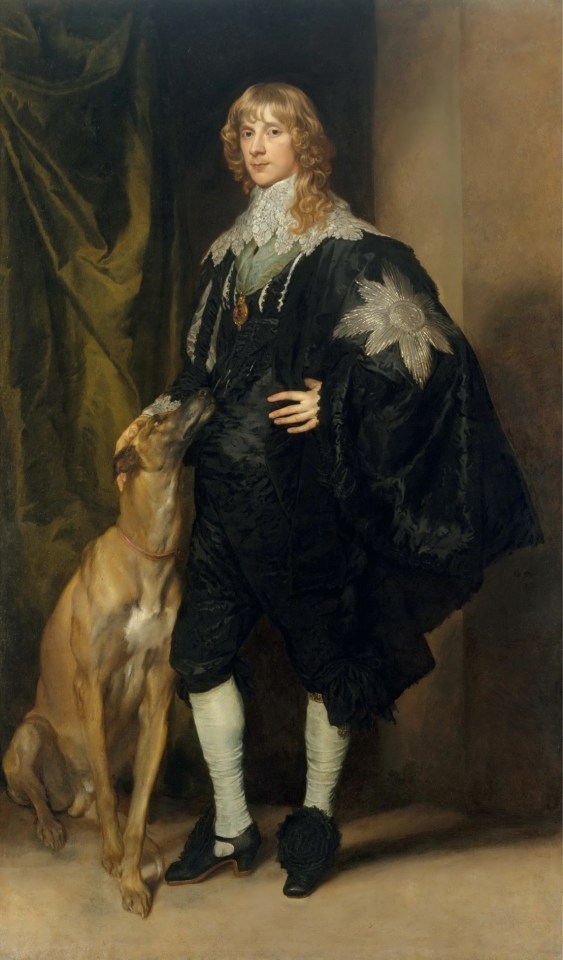
Anthony Van Dyck (Flemish, 1599-1641) • James Stuart, 1st Duke of Richmond and Lenox • 1633
The duke is sporting the latest in hairstyles - the lovelock. Also called a Bourbon lock, French lock, or heart breaker. He must've missed the scathing indicment below.
“Although considered quite fashionable, many people detested lovelocks, considering them unnecessary and extravagant. In 1628 a sixty-three page book denouncing lovelocks was published. The author, William Prynne, railed against the wearing of lovelocks as “Unlovely, Sinfull, Unlawfull, Fantastique, Disolute, Singular, Incendiary, Ruffianly, Graceless, Whorish, Ungodly, Horred [Horrid], Strange, Outlandish, Impudent, Pernicious, Offensive, Ridiculous, Foolish, Childish, Unchristian, Hatefull, Exorbitant, Contemptible, Sloathfull, Unmanly, Depraving, Vaine, and Unseemly,” according to Richard Corson in Fashions in Hair.”
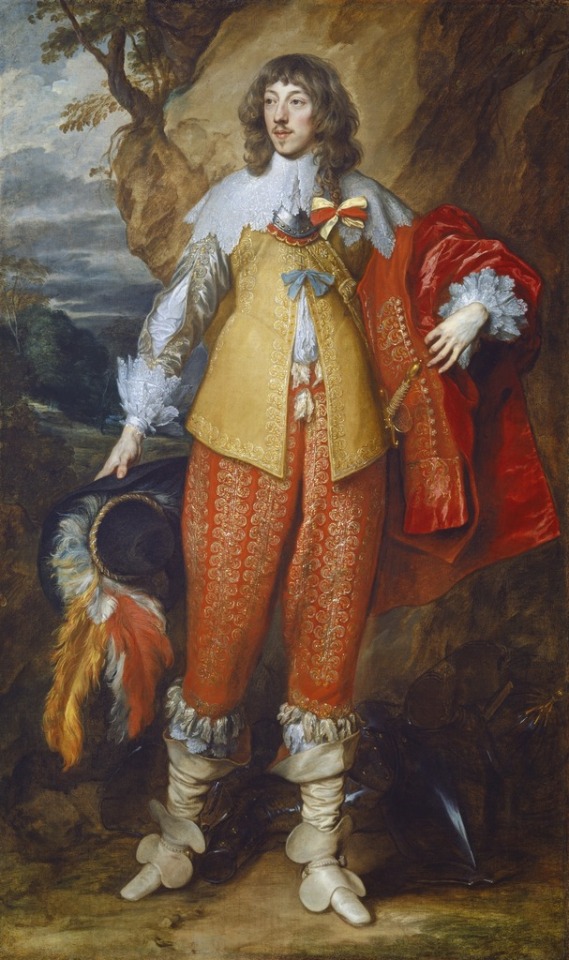
Anthony van Dyck (Flemish, 1599-1641) • Henri II de Lorraine • 1634 • National Gallery of Art, Washington, D.C.
Sorry, girls and boys, this gent is spoken for. Henri is wearing ribbons in his lovelock, which symbolizes a token from a romantic interest. He didn't read the memo, either.
#james stewart#duke of cambridge#portrait#art#flemish baroque#the resplendent outfit#dutch artist#art history#fashion history#painting#royal portraits#lovelock#anthony van dyck
41 notes
·
View notes
Photo
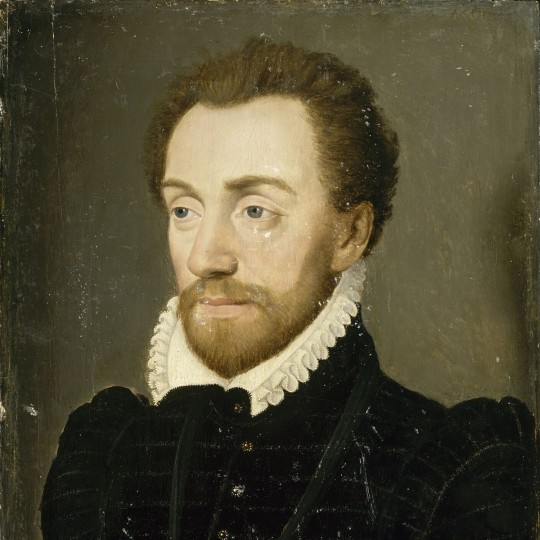
Louis I de Bourbon, Prince of Condé
Louis I de Bourbon (l. 1530-1569) was a descendant of Louis IX of France (r. 1226-1270) and founder of the House of Condé. The Prince of Condé proved his valor as a Huguenot military leader during the first three French Wars of Religion and died at the Battle of Jarnac in 1569.
Historical Context
The Protestant Reformation disrupted the religious status quo of the early 1500s in Europe when multitudes embraced the teachings of Martin Luther (l. 1483-1546) and John Calvin (l. 1509-1564). Protestantism made gains in France among the nobility and commoners alike in the first decades of the 16th century and encountered opposition from the Catholic Church. By the mid-16th century, Protestants who followed the teachings of Calvin were known as Huguenots or Calvinists. Marguerite de Navarre (l. 1492-1549) protected Protestant leaders and supported reform efforts in the Catholic Church. She was the sister of King Francis I of France (r. 1515-1547), the mother of Huguenot leader Queen Jeanne d'Albret (l. 1528-1572), and the grandmother of Henry of Navarre (l. 1553-1610), who converted to Catholicism in 1593 to become Henry IV of France, the first Bourbon king. The Protestant challenge to the status quo of the Catholic Church in France eventually led to a bloody struggle between Protestants and Catholics during the French Wars of Religion (1562-1598).
The royal houses of France were often in competition and made alliances according to political expediency. Political intrigues, assassinations, and executions were never far from religious questions. The House of Guise, a minor offshoot of the Dukes of Lorraine, was the most ardent archenemy of Protestants. The Bourbons were princes of royal blood, but distant from the throne and with modest wealth. They were also viewed with suspicion since Charles III de Bourbon had plotted with Henry VIII of England (r. 1509-1547) and Charles V, Holy Roman Emperor (r. 1519-1556) to take up arms against King Francis I. Positions among the high nobility became clearly established with the all-powerful Guises on one side and the Bourbons on the other.
Continue reading...
18 notes
·
View notes
Text
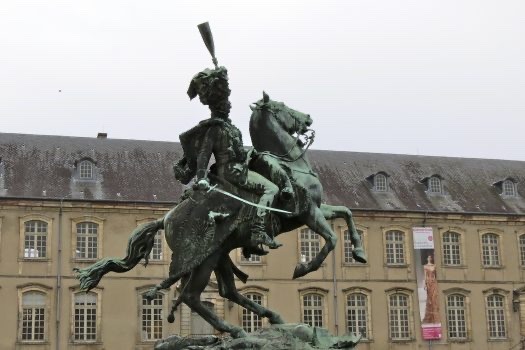

Bronze statue of Antoine Charles Louis de Lasalle, cavalry general during the Napoleonic Wars.
Lunéville, France (Lorraine region)
Artist: Henri Joseph Charles Cordier
96 notes
·
View notes